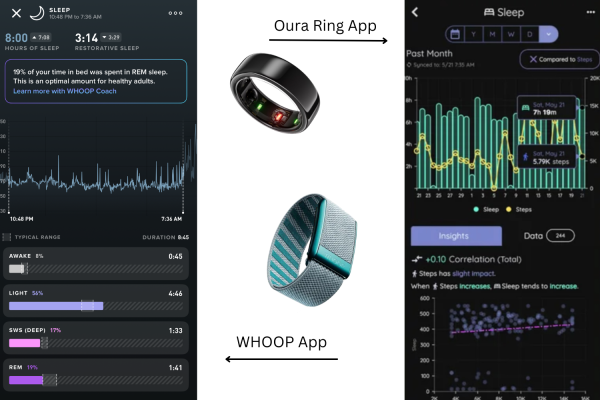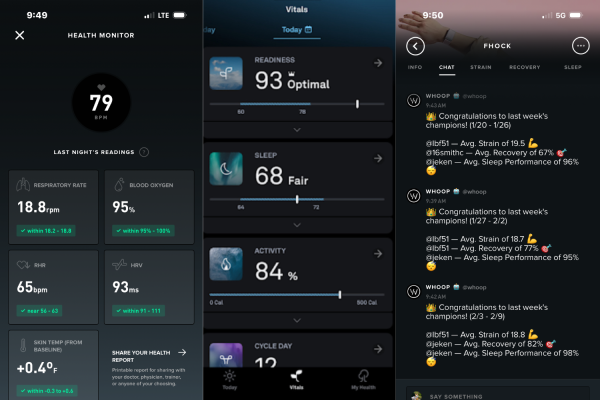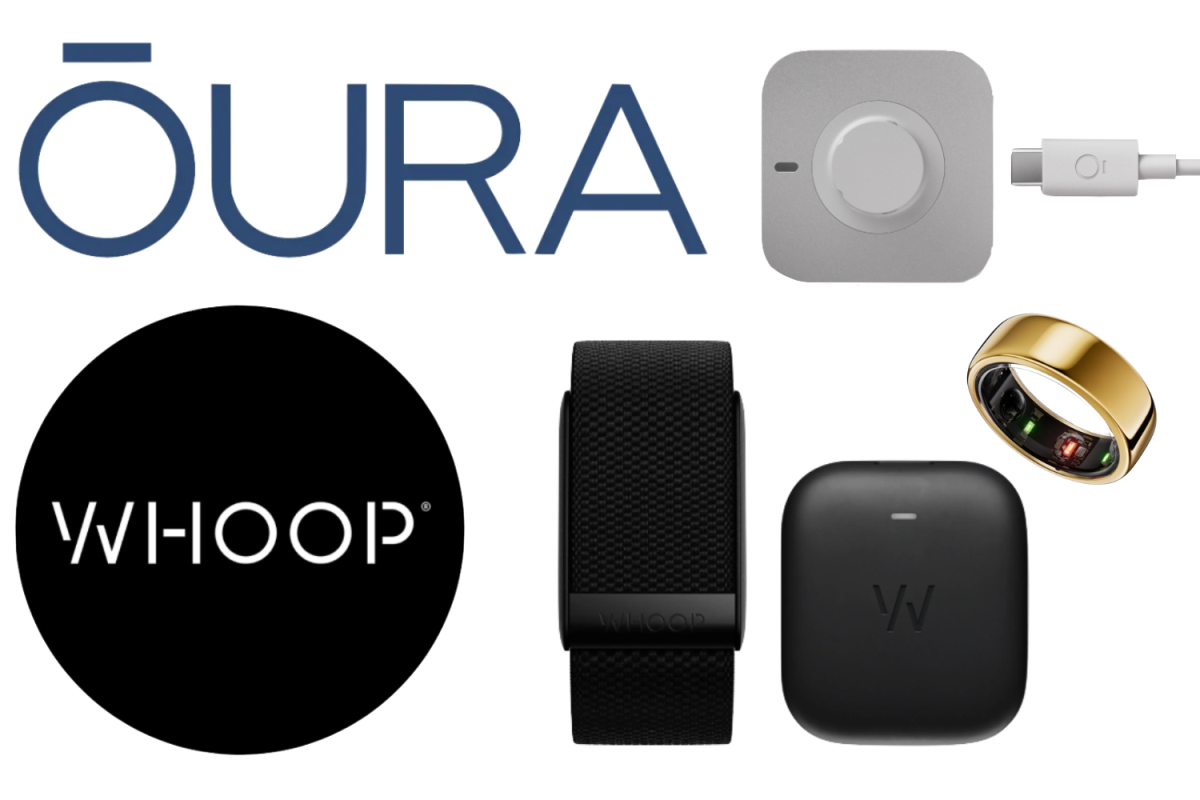Fitness trackers are an integral part of modern health and wellness. Most devices track heart rate, sleep, activity levels, and recovery. The production of smartwatches and fitness trackers grew from 2021 to 2024. This expert predict that this upward trend will continue as the market for fitness devices strengthens, according to atpconnect.org.
Fitness devices rely on multiple combinations of algorithms and sensors to provide health reports. The more advanced devices use infrared light to measure blood flow variations under the skin, monitor body temperature, and use data to understand cardiovascular and respiratory health. The individual can track their data based on their movement patterns, according to borntoengineer.com. There are multiple devices solely used to track running and steps, like the Fitbit and Garmin watches. More recently, the Oura Ring and WHOOP band have overtaken the past devices due to their intricate data analysis. Both companies released their original models in 2015 but since then have thrived in the fitness community. In March of 2022, Oura Ring reported one million sales, and in September of 2024, Oura Ring sold more than two and a half million, according to ouraring.com and bloomberg.com.

The WHOOP is a fabric-based, screenless wrist device that experts designed for constant use, according to whoop.com. The Oura ring’s smooth and subtle design allows for comfortable use, according to pcmag.com. Both devices are lightweight and sleek for everyday situations. They are ideal for those who want a minimalist look and all day use.
The Whoop and the Oura Ring have similar tracking methods, but each has its own stronger characteristics. The main function of the WHOOP is for tracking recovery and activity. It continuously monitors heart rate variability (HRV), resting heart rate (RHR), respiratory rate, and strain levels, according to tomsguide.com. The WHOOP also does a deep dive into sleep and sleeping habits. The focus on strain score and recovery helps athletes to focus on the steps of recovery. Users, who tested both, agree that the WHOOP does a better showing all of the biometrics of health, according to cosmopolitan.com. Junior Mackenna Kelly joined the WHOOP community nearly a year ago. Mackenna spoke about the key aspects that differentiate the WHOOP from other devices.
“Features that make WHOOP stand out from other wearables is the simple and easy access you have to so many features, such as rest, recovery, sleep, strain, heart rate, [and] HRV,” Mackenna said. “It’s overall a great band with easy access to what should be essential to athletes.”
The Oura ring focuses more on sleep than the Whoop. The app, which connects to a mobile device, provides a daily score to help users understand their recovery and stress levels, according to tomsguide.com. Users also found that the app compatible to the ring is easier to use that the WHOOP app, according to cosomopolitan.com. Ms. Tockstein, Upper School Science Teacher, commented on how she uses the Oura ring in her everyday life.

Both devices last for four to seven days in between charges. Studies show that the Oura rings is best for those who focus on prioritizing their health and sleep, while the Whoop is best for athletes and fitness enthusiasts looking to optimize training intensity. As of January 2025, WHOOP’s annual revenue reached 750 million dollars, according to leadiq.com. As of December 2024, Oura Ring’s revenue was 500 million, according to fiercehealthcare.com.
All fitness devices cater to different audiences. Fitness trackers provide valuable insights that promote healthier lifestyles, but their effectiveness ultimately depends on their usage. Ms. Tockstein, Upper School Science Teacher, discussed why she ultimately chose the Oura Ring.
“I absolutely love the sleep analysis and that it ties to the heart rate. There are times when my Apple Watch would be like you slept for ten hours, […] and yet I felt awful the next morning,” Ms. Tockstein said. “My Oura ring gives me info like your heart rate lowered really late in your sleep cycle. This is a sign of stress and you need to to take it easy today.”
Featured Image by Casey Smith ’26





Addie Callaway • Feb 18, 2025 at 11:51 am
This is a great article, Casey! Very informative!